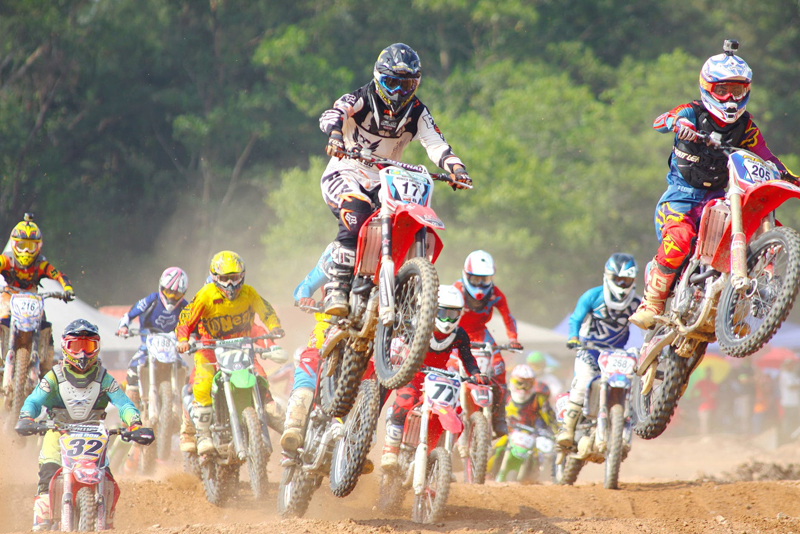What is CFD?

When it comes to making a car fast, you need a good driver, a decent engine and aerodynamic efficiency. These threee things combined will bring you wins, or see you at the back of the grid. The aerodynamics is one of the most scientific aspects of the car, with every bump and groove examined in minute detail.
At the moment, wind tunnel usage is still predominant, despite the FIA's attempts to restrict usage. Measuring how the air flows around the car will present enough data to work out what changes need to be made to make you go a bit faster. This requires a lot of precise engineering though. Scale models need to be made, and the results measured accurately.
CFD, or Computational Fluid Dynamics, can provide similar data using computers instead of the massive wind tunnels.
The three areas that need to be measured are downforce (the pressure keeping the car on track and not spinning off), drag (the airflow around the car, specifically that which slows it down), and balance (that which affects the air when sudden changes occur, such as braking and cornering).
Rather than build a physical model of the car, a computer simulation is created, and then masses of data is input to represent the physical exertions placed on a car as it would in real life. Each component of the car can be tested, or the whole thing can be put under pressure, and the elements - drag, downforce and balance - can be measured separately or together. The bonus to using a simulation rather than a wind tunnel and real life testing, is that there is complete control over the elements. Rather than sitting in a garage, waiting for the rain to pass, the CFD engineers can simulate sunny weather, and see how the car will react. Another bonus is that instead of modelling various additions, or changes, to the car, tweaking things on a computer is much simpler, and cost-effective. If it doesn't work, it is easy to return to a previous version.
Although extremely useful, and much more technical than my brief description, there are drawbacks to the use of computers. The nature of F1 is that things are unpredictable, and sometimes the data just doesn't correlate to what happens when a car is run out on track.
CFD is just a part of the process for building an F1 car. It is usually the first step in a long design procedure - which will then lead onto the wind tunnel, when the data is acceptable. Once out of the wind tunnel, then track testing can be the next step. At the moment, the three processes work together to shave milliseconds off a team's laptimes. Reducing one or the other methods, as the FIA are trying to do, will mean reliance on another, and at the moment, it's unclear what effect that will have on development.
At the moment, wind tunnel usage is still predominant, despite the FIA's attempts to restrict usage. Measuring how the air flows around the car will present enough data to work out what changes need to be made to make you go a bit faster. This requires a lot of precise engineering though. Scale models need to be made, and the results measured accurately.
CFD, or Computational Fluid Dynamics, can provide similar data using computers instead of the massive wind tunnels.
The three areas that need to be measured are downforce (the pressure keeping the car on track and not spinning off), drag (the airflow around the car, specifically that which slows it down), and balance (that which affects the air when sudden changes occur, such as braking and cornering).
Rather than build a physical model of the car, a computer simulation is created, and then masses of data is input to represent the physical exertions placed on a car as it would in real life. Each component of the car can be tested, or the whole thing can be put under pressure, and the elements - drag, downforce and balance - can be measured separately or together. The bonus to using a simulation rather than a wind tunnel and real life testing, is that there is complete control over the elements. Rather than sitting in a garage, waiting for the rain to pass, the CFD engineers can simulate sunny weather, and see how the car will react. Another bonus is that instead of modelling various additions, or changes, to the car, tweaking things on a computer is much simpler, and cost-effective. If it doesn't work, it is easy to return to a previous version.
Although extremely useful, and much more technical than my brief description, there are drawbacks to the use of computers. The nature of F1 is that things are unpredictable, and sometimes the data just doesn't correlate to what happens when a car is run out on track.
CFD is just a part of the process for building an F1 car. It is usually the first step in a long design procedure - which will then lead onto the wind tunnel, when the data is acceptable. Once out of the wind tunnel, then track testing can be the next step. At the moment, the three processes work together to shave milliseconds off a team's laptimes. Reducing one or the other methods, as the FIA are trying to do, will mean reliance on another, and at the moment, it's unclear what effect that will have on development.
This site needs an editor - click to learn more!
You Should Also Read:
What is KERS?
World Motorsport Council Decisions
Related Articles
Editor's Picks Articles
Top Ten Articles
Previous Features
Site Map
Content copyright © 2023 by Christine Blachford. All rights reserved.
This content was written by Christine Blachford. If you wish to use this content in any manner, you need written permission. Contact
BellaOnline Administration
for details.


